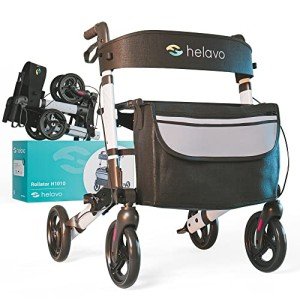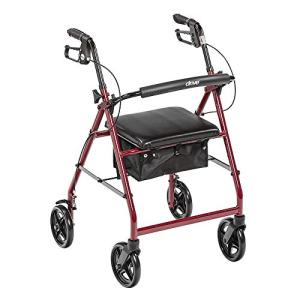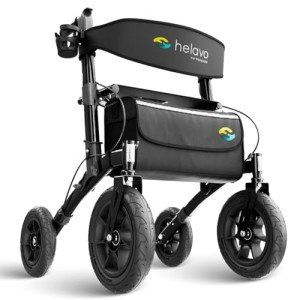As the global population ages, the demand for mobility aids has steadily increased, leading to innovations that enhance comfort, safety, and independence for users. Among these innovations is the all-terrain upright walker with flat-free tires. This device is designed to adapt to various surfaces, providing users with increased stability and support as they move through diverse environments. This guide delves into the features, benefits, and frequently asked questions regarding all-terrain upright walkers with flat-free tires.
What is an All-Terrain Upright Walker?
An all-terrain upright walker is a mobility aid that supports users who may have difficulty walking independently. It is designed to promote an upright posture, allowing users to maintain visibility and actively engage with their surroundings. Unlike traditional walkers, which often require significant bending, upright walkers facilitate a more natural walking position. The addition of flat-free tires enables these walkers to navigate various terrains, from smooth indoor floors to rugged outdoor paths.
Key Features of All-Terrain Upright Walkers
-
Flat-Free Tires: As the name implies, flat-free tires are designed to prevent punctures and air leaks, providing a hassle-free experience. These tires maintain their integrity regardless of the terrain, allowing users to traverse uneven ground without the worry of a flat.
-
Adjustable Height: Most all-terrain walkers come with adjustable handles to accommodate users of various heights. This feature is essential for ensuring comfort and optimal posture during use.
-
Sturdy Frame: The frame of an all-terrain walker is often constructed from lightweight yet durable materials, such as aluminum or steel. This construction ensures that the walker can support a significant amount of weight without compromising stability.
-
Versatile Wheel Design: The wheels of these walkers are designed to provide traction and stability. Larger wheels facilitate smoother movement across gravel, grass, and other challenging surfaces.
-
Storage Options: Many all-terrain upright walkers come with built-in storage, such as a basket or pouch, allowing users to carry personal belongings or essentials like medications and snacks during their outings.
-
Braking System: A reliable braking system is crucial for user safety. Many upright walkers are equipped with hand brakes that are easy to engage and disengage, providing the user with control during their movement.
Benefits of Using an All-Terrain Upright Walker
-
Enhanced Mobility: Individuals using all-terrain upright walkers can navigate a myriad of surfaces, making it easier to engage in outdoor activities or simply walk in their neighborhoods without the fear of losing balance.
-
Improved Posture: The design of these walkers promotes an upright stance. This position can lead to less strain on the back and neck, a common issue for users of traditional walkers.
-
Greater Independence: With increased mobility and stability, many users find they can participate in social activities, explore new environments, and manage daily tasks without significant assistance.
-
Robust Safety Features: Flat-free tires and sturdy frames mean that users can rely on their walkers in diverse conditions, reducing the chances of falls or accidents associated with flat tires.
-
Customizability: Many all-terrain upright walkers come with various customization options, from color choices to additional accessories, catering to individual preferences and needs.
Frequently Asked Questions (FAQs)
1. How do I choose the right all-terrain walker for my needs?
Choosing the right all-terrain walker involves assessing your height, weight, and the terrains you plan to navigate. Consider features such as adjustable handles, weight capacity, and the availability of accessories. Consulting with a healthcare professional or mobility store specialist may also provide additional insights.
2. Are all-terrain upright walkers suitable for indoor use?
Yes, many all-terrain upright walkers are designed for versatility, making them suitable for both indoor and outdoor use. However, users should ensure that the walker suits their indoor environment, particularly in terms of width and maneuverability.
3. How do I maintain my all-terrain upright walker?
Maintaining your all-terrain walker involves regular checks of the tires to ensure they are in good shape, inspecting the brakes for functionality, and ensuring that the frame is free from rust or wear. It's also advisable to keep moving parts lubricated to ensure smooth operation.
4. Can I use an all-terrain walker on steep hills?
All-terrain walkers can handle gentle inclines and declines, but users should exercise caution on steep hills. It is essential to maintain a secure grip on the hand brakes and have someone assist if unsure about the walker’s stability on a steep surface.
5. How much do all-terrain upright walkers typically cost?
The price of all-terrain upright walkers varies based on features, materials, and additional accessories. On average, users can expect to pay anywhere from £200 to £600.
The all-terrain upright walker with flat-free tires represents a significant advancement in mobility aids, providing users with the freedom to navigate various environments safely and comfortably. With enhanced features, it addresses common mobility challenges faced by seniors and individuals with limited mobility. By investing in an all-terrain upright walker, users can continue to engage in their communities and maintain a level of independence that significantly enhances their quality of life.







